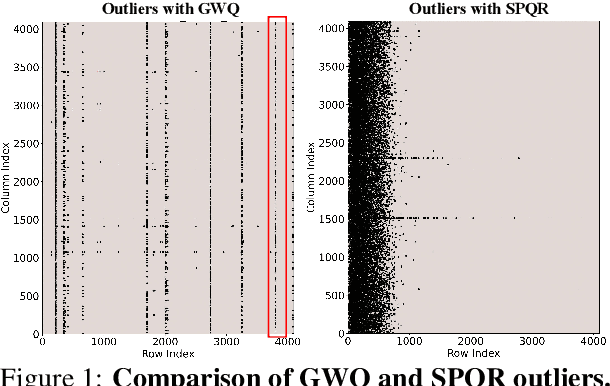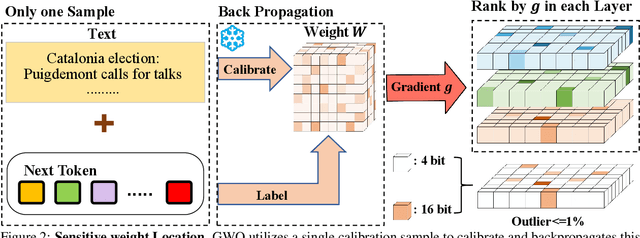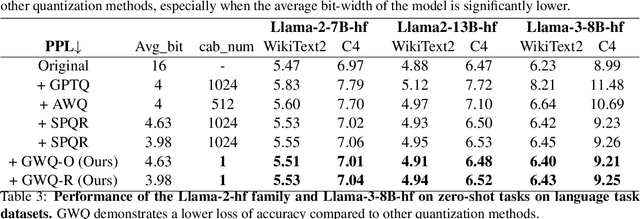Jingcai Guo
SVIP: Semantically Contextualized Visual Patches for Zero-Shot Learning
Mar 13, 2025Abstract:Zero-shot learning (ZSL) aims to recognize unseen classes without labeled training examples by leveraging class-level semantic descriptors such as attributes. A fundamental challenge in ZSL is semantic misalignment, where semantic-unrelated information involved in visual features introduce ambiguity to visual-semantic interaction. Unlike existing methods that suppress semantic-unrelated information post hoc either in the feature space or the model space, we propose addressing this issue at the input stage, preventing semantic-unrelated patches from propagating through the network. To this end, we introduce Semantically contextualized VIsual Patches (SVIP) for ZSL, a transformer-based framework designed to enhance visual-semantic alignment. Specifically, we propose a self-supervised patch selection mechanism that preemptively learns to identify semantic-unrelated patches in the input space. This is trained with the supervision from aggregated attention scores across all transformer layers, which estimate each patch's semantic score. As removing semantic-unrelated patches from the input sequence may disrupt object structure, we replace them with learnable patch embeddings. With initialization from word embeddings, we can ensure they remain semantically meaningful throughout feature extraction. Extensive experiments on ZSL benchmarks demonstrate that SVIP achieves state-of-the-art performance results while providing more interpretable and semantically rich feature representations.
TR-DQ: Time-Rotation Diffusion Quantization
Mar 09, 2025Abstract:Diffusion models have been widely adopted in image and video generation. However, their complex network architecture leads to high inference overhead for its generation process. Existing diffusion quantization methods primarily focus on the quantization of the model structure while ignoring the impact of time-steps variation during sampling. At the same time, most current approaches fail to account for significant activations that cannot be eliminated, resulting in substantial performance degradation after quantization. To address these issues, we propose Time-Rotation Diffusion Quantization (TR-DQ), a novel quantization method incorporating time-step and rotation-based optimization. TR-DQ first divides the sampling process based on time-steps and applies a rotation matrix to smooth activations and weights dynamically. For different time-steps, a dedicated hyperparameter is introduced for adaptive timing modeling, which enables dynamic quantization across different time steps. Additionally, we also explore the compression potential of Classifier-Free Guidance (CFG-wise) to establish a foundation for subsequent work. TR-DQ achieves state-of-the-art (SOTA) performance on image generation and video generation tasks and a 1.38-1.89x speedup and 1.97-2.58x memory reduction in inference compared to existing quantization methods.
FedAPA: Server-side Gradient-Based Adaptive Personalized Aggregation for Federated Learning on Heterogeneous Data
Feb 11, 2025Abstract:Personalized federated learning (PFL) tailors models to clients' unique data distributions while preserving privacy. However, existing aggregation-weight-based PFL methods often struggle with heterogeneous data, facing challenges in accuracy, computational efficiency, and communication overhead. We propose FedAPA, a novel PFL method featuring a server-side, gradient-based adaptive aggregation strategy to generate personalized models, by updating aggregation weights based on gradients of client-parameter changes with respect to the aggregation weights in a centralized manner. FedAPA guarantees theoretical convergence and achieves superior accuracy and computational efficiency compared to 10 PFL competitors across three datasets, with competitive communication overhead.
RoMA: Robust Malware Attribution via Byte-level Adversarial Training with Global Perturbations and Adversarial Consistency Regularization
Feb 11, 2025Abstract:Attributing APT (Advanced Persistent Threat) malware to their respective groups is crucial for threat intelligence and cybersecurity. However, APT adversaries often conceal their identities, rendering attribution inherently adversarial. Existing machine learning-based attribution models, while effective, remain highly vulnerable to adversarial attacks. For example, the state-of-the-art byte-level model MalConv sees its accuracy drop from over 90% to below 2% under PGD (projected gradient descent) attacks. Existing gradient-based adversarial training techniques for malware detection or image processing were applied to malware attribution in this study, revealing that both robustness and training efficiency require significant improvement. To address this, we propose RoMA, a novel single-step adversarial training approach that integrates global perturbations to generate enhanced adversarial samples and employs adversarial consistency regularization to improve representation quality and resilience. A novel APT malware dataset named AMG18, with diverse samples and realistic class imbalances, is introduced for evaluation. Extensive experiments show that RoMA significantly outperforms seven competing methods in both adversarial robustness (e.g., achieving over 80% robust accuracy-more than twice that of the next-best method under PGD attacks) and training efficiency (e.g., more than twice as fast as the second-best method in terms of accuracy), while maintaining superior standard accuracy in non-adversarial scenarios.
In-Context Meta LoRA Generation
Jan 30, 2025



Abstract:Low-rank Adaptation (LoRA) has demonstrated remarkable capabilities for task specific fine-tuning. However, in scenarios that involve multiple tasks, training a separate LoRA model for each one results in considerable inefficiency in terms of storage and inference. Moreover, existing parameter generation methods fail to capture the correlations among these tasks, making multi-task LoRA parameter generation challenging. To address these limitations, we propose In-Context Meta LoRA (ICM-LoRA), a novel approach that efficiently achieves task-specific customization of large language models (LLMs). Specifically, we use training data from all tasks to train a tailored generator, Conditional Variational Autoencoder (CVAE). CVAE takes task descriptions as inputs and produces task-aware LoRA weights as outputs. These LoRA weights are then merged with LLMs to create task-specialized models without the need for additional fine-tuning. Furthermore, we utilize in-context meta-learning for knowledge enhancement and task mapping, to capture the relationship between tasks and parameter distributions. As a result, our method achieves more accurate LoRA parameter generation for diverse tasks using CVAE. ICM-LoRA enables more accurate LoRA parameter reconstruction than current parameter reconstruction methods and is useful for implementing task-specific enhancements of LoRA parameters. At the same time, our method occupies 283MB, only 1\% storage compared with the original LoRA.
On the Discrimination and Consistency for Exemplar-Free Class Incremental Learning
Jan 26, 2025



Abstract:Exemplar-free class incremental learning (EF-CIL) is a nontrivial task that requires continuously enriching model capability with new classes while maintaining previously learned knowledge without storing and replaying any old class exemplars. An emerging theory-guided framework for CIL trains task-specific models for a shared network, shifting the pressure of forgetting to task-id prediction. In EF-CIL, task-id prediction is more challenging due to the lack of inter-task interaction (e.g., replays of exemplars). To address this issue, we conduct a theoretical analysis of the importance and feasibility of preserving a discriminative and consistent feature space, upon which we propose a novel method termed DCNet. Concretely, it progressively maps class representations into a hyperspherical space, in which different classes are orthogonally distributed to achieve ample inter-class separation. Meanwhile, it also introduces compensatory training to adaptively adjust supervision intensity, thereby aligning the degree of intra-class aggregation. Extensive experiments and theoretical analysis verified the superiority of the proposed DCNet.
Exploring Transferable Homogeneous Groups for Compositional Zero-Shot Learning
Jan 18, 2025



Abstract:Conditional dependency present one of the trickiest problems in Compositional Zero-Shot Learning, leading to significant property variations of the same state (object) across different objects (states). To address this problem, existing approaches often adopt either all-to-one or one-to-one representation paradigms. However, these extremes create an imbalance in the seesaw between transferability and discriminability, favoring one at the expense of the other. Comparatively, humans are adept at analogizing and reasoning in a hierarchical clustering manner, intuitively grouping categories with similar properties to form cohesive concepts. Motivated by this, we propose Homogeneous Group Representation Learning (HGRL), a new perspective formulates state (object) representation learning as multiple homogeneous sub-group representation learning. HGRL seeks to achieve a balance between semantic transferability and discriminability by adaptively discovering and aggregating categories with shared properties, learning distributed group centers that retain group-specific discriminative features. Our method integrates three core components designed to simultaneously enhance both the visual and prompt representation capabilities of the model. Extensive experiments on three benchmark datasets validate the effectiveness of our method.
Towards Robust and Realistic Human Pose Estimation via WiFi Signals
Jan 16, 2025Abstract:Robust WiFi-based human pose estimation is a challenging task that bridges discrete and subtle WiFi signals to human skeletons. This paper revisits this problem and reveals two critical yet overlooked issues: 1) cross-domain gap, i.e., due to significant variations between source-target domain pose distributions; and 2) structural fidelity gap, i.e., predicted skeletal poses manifest distorted topology, usually with misplaced joints and disproportionate bone lengths. This paper fills these gaps by reformulating the task into a novel two-phase framework dubbed DT-Pose: Domain-consistent representation learning and Topology-constrained Pose decoding. Concretely, we first propose a temporal-consistent contrastive learning strategy with uniformity regularization, coupled with self-supervised masking-reconstruction operations, to enable robust learning of domain-consistent and motion-discriminative WiFi-specific representations. Beyond this, we introduce a simple yet effective pose decoder with task prompts, which integrates Graph Convolution Network (GCN) and Transformer layers to constrain the topology structure of the generated skeleton by exploring the adjacent-overarching relationships among human joints. Extensive experiments conducted on various benchmark datasets highlight the superior performance of our method in tackling these fundamental challenges in both 2D/3D human pose estimation tasks.
Neuron: Learning Context-Aware Evolving Representations for Zero-Shot Skeleton Action Recognition
Nov 18, 2024Abstract:Zero-shot skeleton action recognition is a non-trivial task that requires robust unseen generalization with prior knowledge from only seen classes and shared semantics. Existing methods typically build the skeleton-semantics interactions by uncontrollable mappings and conspicuous representations, thereby can hardly capture the intricate and fine-grained relationship for effective cross-modal transferability. To address these issues, we propose a novel dyNamically Evolving dUal skeleton-semantic syneRgistic framework with the guidance of cOntext-aware side informatioN (dubbed Neuron), to explore more fine-grained cross-modal correspondence from micro to macro perspectives at both spatial and temporal levels, respectively. Concretely, 1) we first construct the spatial-temporal evolving micro-prototypes and integrate dynamic context-aware side information to capture the intricate and synergistic skeleton-semantic correlations step-by-step, progressively refining cross-model alignment; and 2) we introduce the spatial compression and temporal memory mechanisms to guide the growth of spatial-temporal micro-prototypes, enabling them to absorb structure-related spatial representations and regularity-dependent temporal patterns. Notably, such processes are analogous to the learning and growth of neurons, equipping the framework with the capacity to generalize to novel unseen action categories. Extensive experiments on various benchmark datasets demonstrated the superiority of the proposed method.
GWQ: Gradient-Aware Weight Quantization for Large Language Models
Oct 30, 2024



Abstract:Large language models (LLMs) show impressive performance in solving complex languagetasks. However, its large number of parameterspresent significant challenges for the deployment and application of the model on edge devices. Compressing large language models to low bits can enable them to run on resource-constrained devices, often leading to performance degradation. To address this problem, we propose gradient-aware weight quantization (GWQ), the first quantization approach for low-bit weight quantization that leverages gradients to localize outliers, requiring only a minimal amount of calibration data for outlier detection. GWQ retains the weights corresponding to the top 1% outliers preferentially at FP16 precision, while the remaining non-outlier weights are stored in a low-bit format. GWQ found experimentally that utilizing the sensitive weights in the gradient localization model is more scientific compared to utilizing the sensitive weights in the Hessian matrix localization model. Compared to current quantization methods, GWQ can be applied to multiple language models and achieves lower PPL on the WikiText2 and C4 dataset. In the zero-shot task, GWQ quantized models have higher accuracy compared to other quantization methods.GWQ is also suitable for multimodal model quantization, and the quantized Qwen-VL family model is more accurate than other methods. zero-shot target detection task dataset RefCOCO outperforms the current stat-of-the-arts method SPQR. GWQ achieves 1.2x inference speedup in comparison to the original model, and effectively reduces the inference memory.
 Add to Chrome
Add to Chrome Add to Firefox
Add to Firefox Add to Edge
Add to Edge